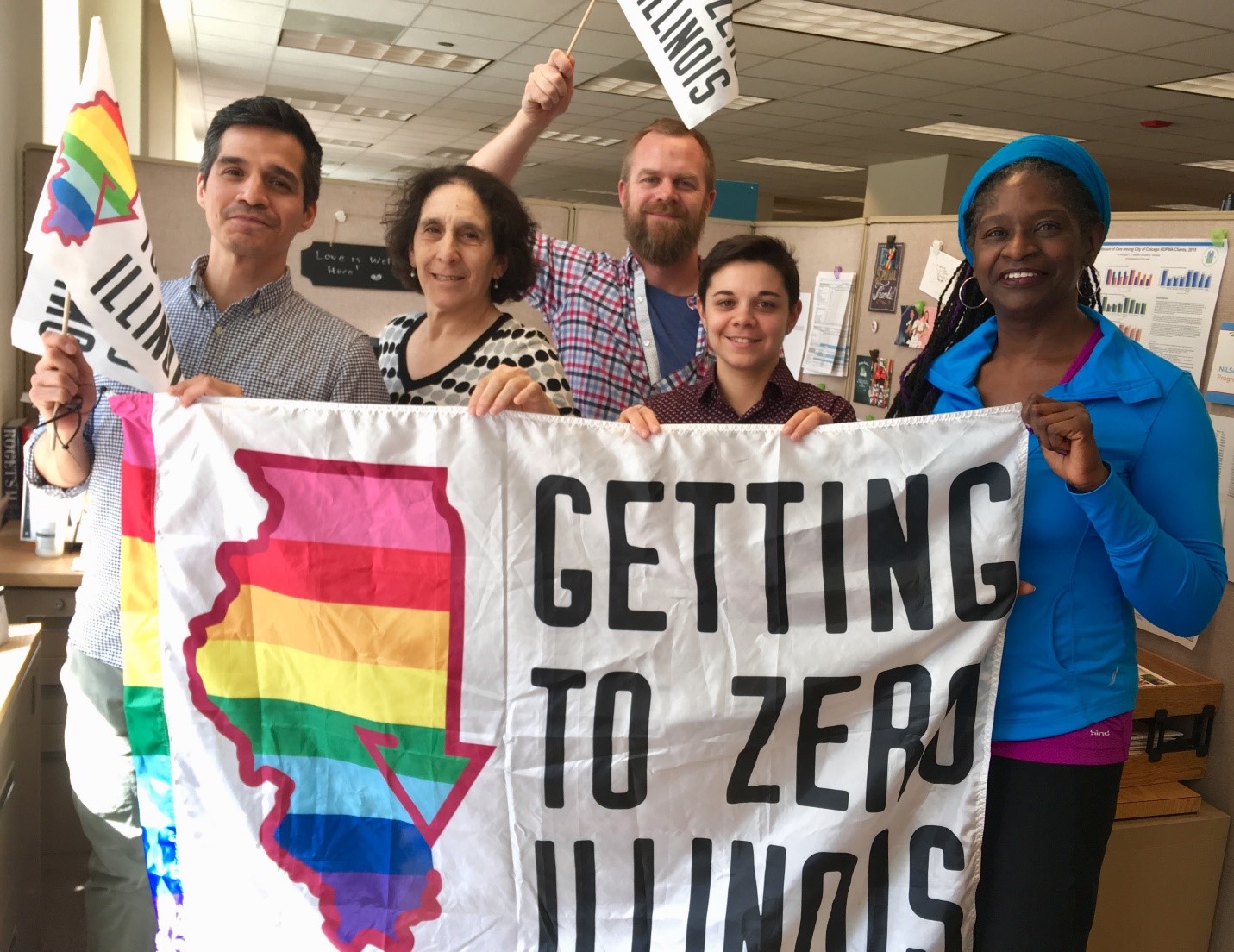
April 30, 2019
5 takeaways from the 2019 National HIV Prevention Conference
With contributions from Tammy Rutledge and pictured CDPH staff (from left to right): Juan Ortega, Donna Peace, Patrick Stonehouse, Ayla Karamustafa and Evelyn Green
Thousands of researchers, health department representatives, members of community-based organizations and people living with HIV from all over the country gathered last month in Atlanta for the 2019 National HIV Prevention Conference (NHPC). The theme for NHPC 2019 was Getting to No New HIV Infections*, which highlighted new HIV science and approaches to prevention, treatment, care and support. Here are five key issues that were under spotlight:
Stigma
Eliminating stigma in all its forms (e.g. HIV, gender identity, sexual behavior, mental health and poverty) is one of the guiding principles of the Getting to Zero Illinois plan, and it was a big topic at the conference. Often at such conferences, stigma is like a boogeyman — referenced in vague terms with little discussion of what it actually is, how it manifests itself on individual and community levels and what can be done to eliminate it. However, this conference had a half-day meeting dedicated solely to stigma and featured several sessions discussing stigma from different perspectives. In addition, for the first time, people living with HIV were given the opportunity to share their experiences dealing with stigmas both in intimate presentations and during plenary sessions in front of hundreds of attendees.
PrEP (pre-exposure prophylaxis)
Stigma remains a major driver of the epidemic as it discourages PrEP usage, forces people into isolation and prevents them from accessing HIV testing and other HIV-related services. In addition, structural and systemic barriers disproportionally impact PrEP uptake in the Black community, affecting awareness, availability and acceptance. Strategies such as the use of mobile units to go into the communities, fast-track screening and treatment for sexually transmitted infections (STIs), and the use of telemedicine (electronic interactive health care) were highlighted at the conference as ways to promote easier access to PrEP. However, only by taking a holistic approach that provides an array of services to meet the priorities of the individual will we be able to eliminate health inequities and get to zero.
Re-Engagement in Care for People Living with HIV
Various health departments met to discuss strategies on how to reengage people living with HIV and reconnect them to medical care and other vital supportive services. Reoccurring themes at NHPC urged for a more streamlined way to receive HIV medical data, supplementing re-engagement services with intensive case management support and an easier way to link clients with health insurance and drug assistance programs. Helping reengage those who have been lost to care is vital to helping Illinois and other states get to zero new transmissions.
Coinfections
Despite progress in reducing new HIV diagnoses, the number of STI transmissions continues to climb. People living with HIV are at a higher risk of developing other infections, and many jurisdictions now acknowledge the need to provide services beyond those that address HIV alone. The conference provided an opportunity to exchange ideas on how to increase collaboration between HIV and STI prevention and treatment programs, enhance linkage of STI and HIV surveillance data, develop specific messaging around HIV co-infections for providers, and ultimately how to reduce STIs among people living with HIV.
Community Engagement
An integral part of the Getting to Zero Illinois initiative is seeing the patient as both an individual and a member of one or more communities. It is no longer a winning strategy for health departments and providers to set goals and guidelines without considering the patient’s needs or understanding the community. Many participants in the conference presented novel approaches that involve patients in the decision-making process and help them actively participate in efforts to decrease the disproportionate impact of HIV among gay and bisexual men, Black and Latinx communities, transgender women of color and other prioritized groups. Getting to zero new HIV transmissions requires all players to share the same vision. Illinois is among the states that have worked on hammering out the details of implementing long-term goals and strategies with health care providers, community activists and, most importantly, members of affected communities.
Getting to Zero Illinois is entering an exciting new phase in the coming weeks. After almost two years of planning, preparation and collecting feedback from communities all over Illinois, the committees are ready to officially release an ambitious five-year plan that addresses the most pressing challenges faced by people living with and vulnerable to HIV. If you want to help us end new HIV transmissions in our home state, visit Getting to Zero Illinois or contact us at [email protected] to learn more.
*Note: GTZ-IL does not typically use the term “infection,” as our community has indicated that it’s stigmatizing and hurtful.
